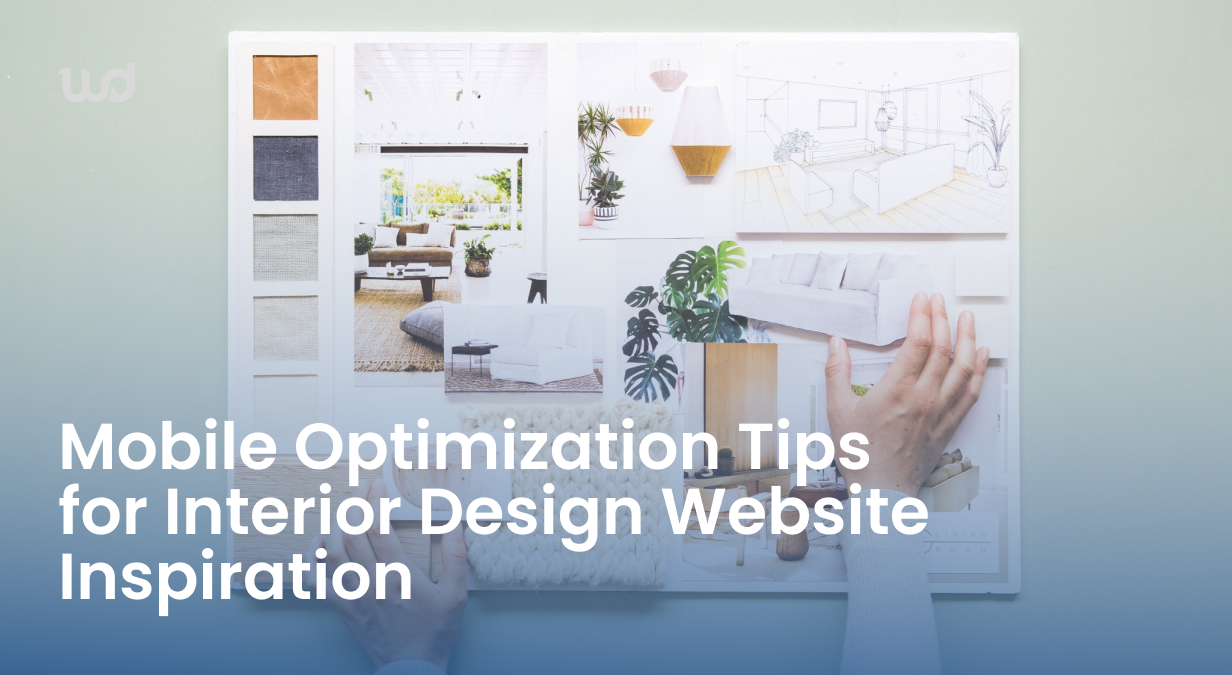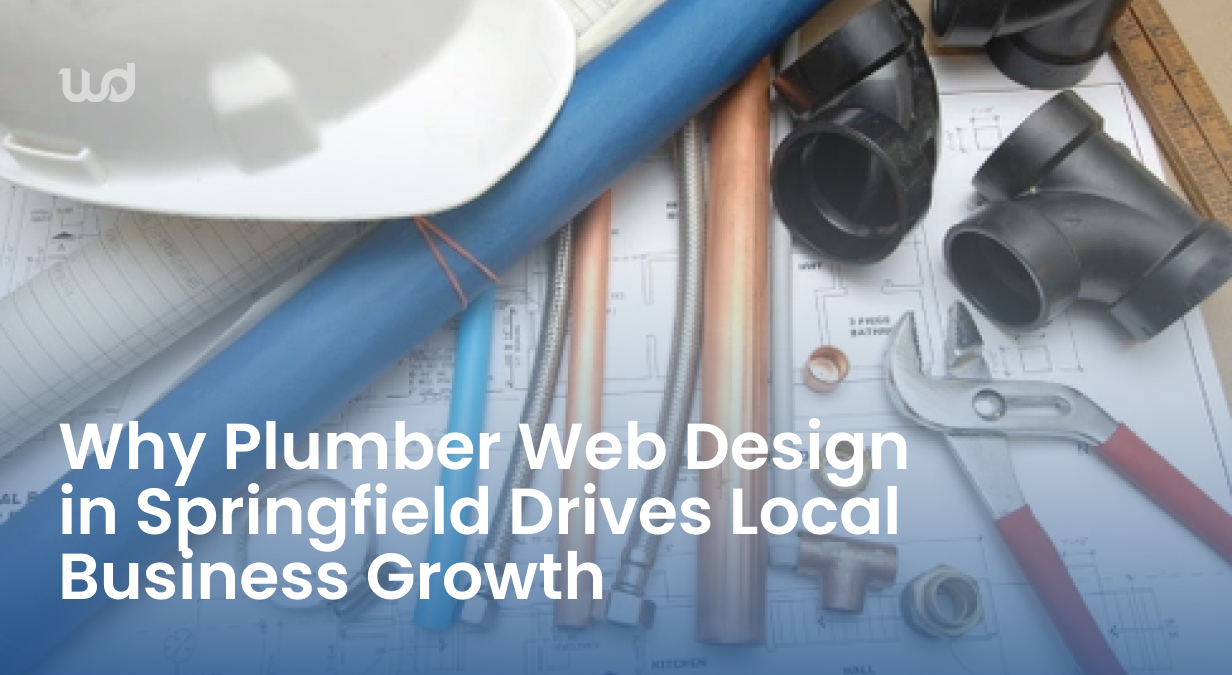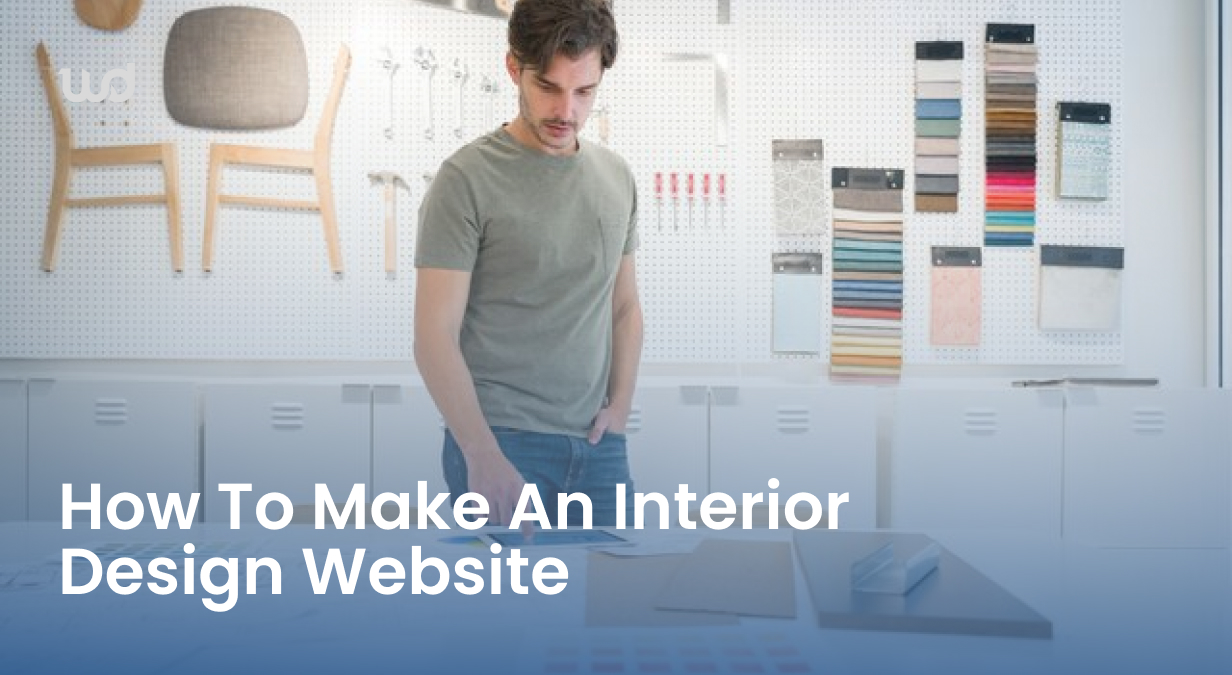Mobile Optimization Tips for Interior Design Website Inspiration

Did you know that 53% of people abandon the website if the mobile site takes more than three seconds to load? For interior design inspiration, where high-quality images and detailed portfolios are key, this is a stark reminder. With mobile searches for interior design website inspiration reaching a maximum of all traffic, neglecting optimization means missing out on potential clients who seek faster, smoother sites.
Imagine a client looking at amazing home makeovers online. But, they face slow loading, tiny text, or images that don’t fit. It’s really frustrating. Since, Interior design websites depend on visuals, which can slow down mobile screens. This infuriates clients who want to see stunning visuals, but slow loading or high latency can actually cause trouble to the users.
That’s why making your website mobile-friendly is non-negotiable. Custom web design for interior designers must show off their style, draw in new clients easily, and opt for the best mobile optimization practices that can turn these issues into advantages. By streamlining galleries and making navigation touch-friendly by leveraging intuitive gesture control, you can engage mobile visitors and convert them into clients without compromising your brand’s visual storytelling.

This article explores why interior design website inspiration must focus on mobile-first strategies. You’ll learn how competitors use mobile-optimized portfolios to draw in clients. Plus, you’ll get practical steps to implement these strategies on your site.
Why Mobile Optimization Matters for Interior Design Websites
Mobile devices have now become the user’s favorite. Hence, the a need for interior designers to develop interior design websites that are highly mobile responsive as it’s just not a choice to be followed but a necessity to be implemented.
Moreover, Google now prioritizes mobile versions of websites in search rankings, impacting the viability of your business operations. So, failing to adopt and execute the best mobile optimization practices for interior design websites could lead to reduced visibility in a market where more than half of the total web traffic comes from mobile devices.
The Mobile-First Index and Its Impact on Your Design Business
Google’s move to mobile-first indexing means your site’s mobile version is key to search rankings. A poorly optimized site could rank lower than competitors who follow how to make interior design websites mobile-responsive.
Furthermore, businesses that adapt see improved visibility and higher traffic. For instance, studies indicate that mobile-optimized sites receive more than half of the total traffic percentage than non-optimized ones.
How Mobile Users Interact with Interior Design Content
Mobile users scroll quickly and expect instant access to visuals. They tap, not click, so buttons and galleries must be touch-friendly. Large images of living rooms or kitchen designs load quickly? Users don’t intend to stay if the site keeps loading and stacking. As this infuriates them hence so tips are needed to avert it:
Key tips include:
- Use compressed images without sacrificing quality
- Design menus for one-handed use
- Ensure portfolios load in under three seconds
Conversion Rate Differences Between Mobile and Desktop Users
Data shows mobile users convert less often than desktop visitors on unoptimized sites. But when mobile sites are streamlined, conversions rise. A well-optimized site turns window shoppers into clients. For instance, Houzz reports that interior designers with mobile-responsive portfolios see 25% higher inquiry rates. Poor mobile experiences cost businesses nearly more than half of the total percentage of loss in the form of users as they abandon sites that aren’t mobile-friendly.
Moreover, Ignoring mobile optimization means losing leads and rankings. Prioritizing best mobile optimization practices turns visitors into clients and keeps your business visible in a mobile-driven world. Responsive web design for construction companies ensures seamless functionality, higher engagement, and improved conversion rates.
Top Interior Design Website Inspiration for Mobile Experiences
Explore top interior design websites that excel on mobile. These examples showcase interior design website inspiration and responsive web design ideas for construction companies and interior designers as well. They demonstrate how mobile-first approaches enhance user engagement.
Award-winning interior Design Websites with Exceptional Mobile UX
Brands like Studio ODA and Design Milk focus on quick load times, under 3 seconds, through image compression. Their mobile menus feature intuitive hamburger icons and search bars, lowering bounce rates by 40%. In addition to that, West Elm’s swipe galleries enable users to explore layouts touch-first, a strategy highlighted in 2023 UX benchmarks.

Color & Typography Trends for Mobile
High-contrast palettes, like Abigail Ahern’s black-and-white, enhance readability. Sans-serif fonts, such as Open Sans and Montserrat, are preferred, with line heights ≥1.6 to prevent eye strain. A variety of surveys and templates depict that most users favor these combinations for mobile interfaces.
Interior Defines sticky bottom navigation bar keeps CTAs visible during scrolling. Interior Define and World of Interiors employ gesture-based menus and allow to swipe left for collections and tap-and-hold for filters. Design Milk’s voice search integration allows users to say “modern living rooms” to filter portfolios instantly.
“Mobile navigation must balance simplicity with depth—users want to explore without getting lost.” – UX Collective 2024 Report.
Essential Mobile Optimization Techniques for Visual-Heavy Websites
Optimizing visual-rich interior design websites for mobile requires balancing aesthetics and performance. Start with interior design website mobile-friendly tips like responsive images, and use formats like Webp, which cuts file sizes compared to JPEG without sacrificing quality. Also, implement lazy loading to delay non-critical image loading until users scroll near them.
CSS sprites and icon fonts reduce HTTP requests, speeding up load times. Caching mechanisms store static assets, slashing repeat visit load times by 40%. For touch interactivity, ensure buttons are at least 44×44 pixels—large enough for easy taps. Simplify forms by pre-filling fields with mobile device data and reducing required steps.
Follow this checklist to prioritize high-impact changes:
- Convert all images to Webp and enable lazy loading
- Use CSS sprites for icon sets
- Set form fields to autocomplete=”on”
- Test touch targets with Google’s Mobile-Friendly Test tool
This simply answers how to make interior design websites mobile-responsive and provides strategies to maintain visual appeal while ensuring fast loading. Real estate agent website design firm services can also help implement best practices for mobile optimization. Prioritize technical fixes that directly address mobile pain points for measurable performance gains.
Creating Responsive Design Systems for Interior Design Content
Building a responsive design system begins with fluid grids that adapt to any screen size. It’s crucial to prioritize responsive design ideas for interior designers that merge beauty with practicality. Start with mobile-first layouts, ensuring projects load swiftly on smartphones. Then, scale them up for larger screens.
- Use flexible image containers to shrink galleries without losing detail
- Implement interior design website mobile-friendly tips like touch-friendly buttons and collapsible menus
- Test breakpoints at 360px, 768px, and 1024px to match common device sizes
|
Framework |
Features |
Best For |
|
Bootstrap |
Pre-built elements, grid systems |
Quick prototyping |
|
Tailwind CSS |
Utility-first styling, customization |
Brands needing unique branding |
Optimize typography by pairing a primary sans-serif with a secondary display font. Prioritize project thumbnails over text-heavy descriptions on mobile views. Houzz’s mobile app uses a responsive web design that has staggered grids that reorder elements smoothly across devices. This approach keeps portfolios engaging without sacrificing visual impact.
Mobile Optimization Tools for Interior Design Portfolios
Creating stunning visuals on mobile devices requires the right tools. These tools ensure speed and quality, streamlining workflows. They maintain the clarity of 3D renders and client photos.
Image Compression Solutions for High-Quality Portfolio Photos
Optimize visuals without losing detail using:
- TinyPNG: Reduces JPEG/PNG sizes by 80% while retaining 95% visual fidelity. Also, it uses 70%-85% quality for client photos for 3D render previews.
- ShortPixel: Integrates with WordPress galleries, auto-converting BMP files to Webp. Ideal for high-resolution floor plans and set lossy compression for furniture textures.
- Squoosh: Open-source tool with real-time previews. Apply the “mozjpeg” preset for render animations, cutting file sizes by half.
Mobile Performance Testing Tools
Test load times with:
- Google PageSpeed Insights: Prioritize “Eliminate render-blocking resources” alerts affecting 3D model galleries.
- GTmetrix: Focus on “Largest Contentful Paint” scores below 2.5 seconds for client portfolios. WebPageTest: Run “First Input Delay” tests on 4G networks to mirror real-world client browsing conditions.
Plugin Recommendations for WordPress Sites
Boost performance with:
- WP Rocket ($39/year): Auto-defers lazy-loading of hero images, reducing initial load times by half of the total.
- Smush (Free/Paid): Built-in Webp conversion for 3D render libraries, shrinking image weight by half of the total.
- Autoptimize (Free): Minifies CSS/JS files without breaking hover effects in mobile galleries.
Combine these tools with the best mobile optimization practices for interior design websites. This ensures that renders and client projects load smoothly on all devices.
Implementing Mobile Optimization to Elevate Your Interior Design Website
Mobile optimization is not just a trend; interior design businesses must succeed online. By adopting the best mobile optimization practices, your brand can stay ahead in a market dominated by mobile users. Making your interior design website mobile-responsive unlocks higher engagement and conversions.
Begin with quick wins: compress images with tools like TinyPNG, simplify navigation menus, and test with Google’s Mobile-Friendly Test. Invest in responsive frameworks like Bootstrap or WordPress plugins such as Elementor to adapt layouts across devices. Use lazy loading solutions like WP Rocket to balance speed and visual appeal for large galleries and 3D renderings.
By following these tips, you can ensure your site meets both aesthetic and functional demands. Mobile optimization is not a one-time task but a strategy that evolves with design trends. Start today and position your brand as a leader in delivering seamless, visually compelling mobile experiences. Partner up with Website Digitals to help you attract more leads and grab more deals! Call us at (646) 222-3598 or email info@websitedigitals.com to get started today!
Frequently Asked Questions:
What are the best mobile optimization practices for interior design websites?
Optimizing for mobile involves several key steps. First, ensure your website has a responsive design that adjusts to different screen sizes. Next, optimize images to speed up loading times. Use navigation that’s easy to use on mobile devices.
Consider adding touch-friendly elements. Lastly, use tools to test how your site performs on mobile devices.
How can I ensure my interior design website is mobile-friendly?
To make your site mobile-friendly, start with a responsive design. It means your layout changes based on the screen size. Use tools to test your site’s mobile performance.
Moreover, interior designers uses it to streamline the content for faster loading. Keep your visuals high quality while optimizing images. These steps will enhance your site’s mobile experience.
What are some responsive design ideas for interior designers?
Responsive design for interior designers involves several strategies. Use flexible grids and adaptive layouts. Incorporate touch-friendly navigation, like hamburger menus.
Show multimedia content efficiently on mobile devices. This ensures a smooth user experience across different screens.
What are the common challenges of mobile optimization for interior design websites?
Mobile optimization for interior design websites comes with several challenges. One is balancing high image quality with fast load times. Ensuring usability with touch interactions is another.
Creating layouts that work well on various screen sizes without losing appeal is also a challenge.







